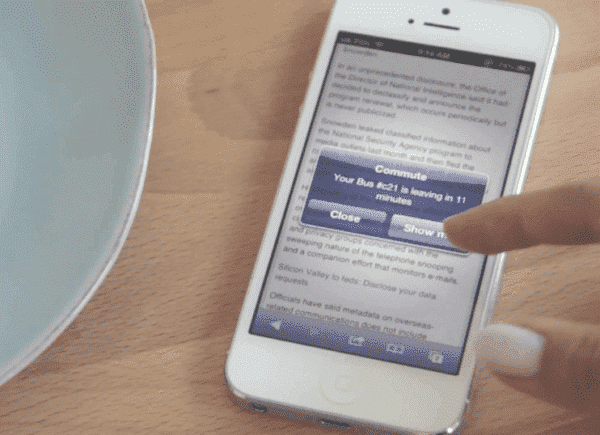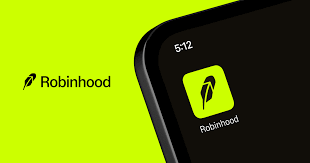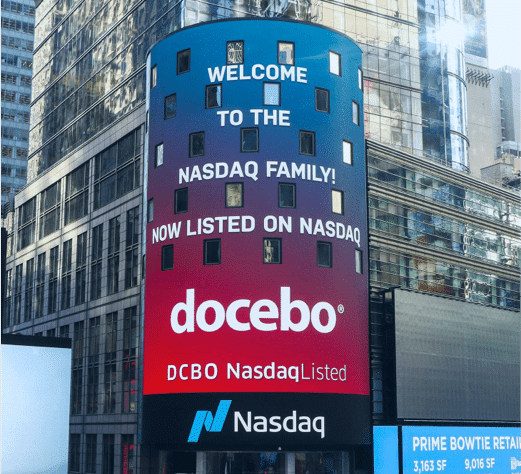
Since last year, in Vancouver at least, important alliances have been made between the nascent companies taking part in early-stage development programs and art students. It’s a partnership that, on the face of it, pairs historically antagonistic groups (artists and businesspeople), but accompanies a significant shift in the business-world rhetoric of the last couple of years.
In Fall 2013, Emily Carr University’s Social + Interactive (SIM) Centre partnered with Vancouver start-up incubator GrowLab, pairing five design research assistants with three companies participating in the 2013 cohort as well as two alumni companies, resulting in rave reviews from the companies involved and five hires.
Kate Armstrong, the SIM Centre’s director of Intersections Digital Studios said, “The importance of design in this sector is obvious. Developing a research integration between Emily Carr University and these accelerators and startups benefits everyone. We are excited to broaden our initiatives in this area.”
The SIM Centre is funded through a five-year NSERC grant (the Natural Sciences and Engineering Research Council), and exists to capitalize on the creative and technical expertise of Emily Carr faculty and students in partnering with various players across the technology and creative sectors.
The partnership comes at a moment when Emily Carr is very much on the move. It plans to abandon its Granville Island campus over the next couple years and move to a new Great Northern Way facility, set to open in 2016. The current building is designed to hold 800 students, where the new institution will be able to accommodate approximately 1,800. The expansion both takes into account the burgeoning demand for enrollment at one of Canada’s premiere art schools, and underlines the increasing integration of the principles of art and design with the knowledge economy and technology sector.
Over the last few years, one of the influences of start-up culture on the larger business climate has been the widespread acknowledgement of the importance of “design thinking”, a fact of life that art students already take as a given.
Over the last few years, one of the influences of start-up culture on the larger business climate has been the widespread acknowledgement of the importance of “design thinking”, a fact of life that art students already take as a given. What’s happening as we see larger companies such as SAP and up-and-coming influencers such as Andrew Reid of Vision Critical talking about the centrality of design thinking to their business practice is that the natural affinities shared by artists and entrepreneurs are no longer taken to be mutually exclusive. Even at their greatest distance, the entrepreneurial and artistic mindsets are complementary.
Recent ECUAD graduates Vince Lo and Alvin Kwan have set up shop in their own studio, Faculty Design & Research Ltd., and developed an app called Commute among their many other projects, which features a very clean and intuitive interface and is designed to pilot the user through the process of getting around Vancouver.
Creating a transit app in the current climate would seem to be a losing struggle, unless your app stands a real chance at making itself essential to users. According to a study last year published by Localytics, app retention rates range from 22% of users after a single use of any given app to 2% after 10 uses, which indicates that the metric most commonly trumpeted by app developers, total number of downloads, is practically meaningless if the interface isn’t somehow sticky.
The impetus for creating the app arose from Vince and Alvin’s frustration using currently existing transit apps. Faculty’s Commute app lets the user create presets, such as “Home to Work” or “Home to School” etc. that can then be accessed with a single action, as opposed to repeatedly looking up the same bus routes over and over again. Crucially, the app also contains current weather information. In the tradition of great designers, readymade solutions weren’t cutting it for Alvin and Vince, so they invented their own font, called Uniform, and recorded their own sound effects. The clicks you hear when using the app are actually ping-pong balls that the duo recorded themselves.
Cantech Letter chatted with Alvin and Vince via email to ask them about the process of making the Commute app.
Did you start coming up with app design while you were still in school? How did Emily Carr prepare you for working in the entrepreneurial design world?
Alvin Kwan: About 3–4 years ago, when Vince and I were still in school, mobile apps were still a very new platform to most of us. During that time, there was little knowledge on the process of making an app and the ability to develop and release an entire app seemed quite daunting as students. Looking back at the things we learned at Emily Carr, we may not have been taught about the latest technologies and mediums. However, we have found it more valuable to learn “how to think as a graphic designer” instead of “how to use” a certain program or technology. The former is a skill set that carries on throughout our career and will always impact our design work. Our time at Emily Carr was during an exciting period of technological advancements and hence provided us an opportunity to adapt and discover new ways/tools to solve design problems.
The app sounds like it was born of necessity. You guys developed your own font. And you added a more personalized touch to the itinerary interface. You also recorded your own sound effects. And yet the app retains a simple quality. How were you thinking about functionality without getting carried away with overdesigning it?
Faculty: We truly believe that a good UI design should be simple and intuitive and we do our best to strive for that. During our creative process, we try to put ourselves in the users’ perspective and imagine a scenario such as a rushed departure after work. A user may want to spend as little time as possible to check the bus arrival time on the screen before putting the phone away. Therefore, the design should be invisible, or in other words not distracting to our users.
Over designing can often times be a challenge. However, it is also an important part of our process to distill a complex layout into their fundamental forms. Part of our process often includes pushing and driving the design as far as we can and then to step back and begin stripping away the unnecessary elements. I think the aspect of subtraction is actually a big part of design and art that often gets neglected.
You set yourself the challenge of spending no money in building the app. Was this a self-imposed challenge, or were you guided in your process by anyone?
Faculty: This was a self-imposed challenge for this project. Looking back at the process, we definitely found that the limitations we set on our resources has certainly helped us in pushing the boundaries of how much we can do and finding creative solutions. It’s sort of like the difference between purchasing a ready-to-go bike or building your own bike. As graphic designers, there is definitely a joy and sense of reward when we are able to impact every aspect of our work from the big picture to the finer details.
You talk about the joy and reward in developing the app, and it’s evident that the sense of joy is baked in to the finished product. What do you look for in apps? What apps do you regularly return to, and what features do you think make an app sticky?
Faculty: We are always inspired by apps that are able to connect with our surroundings, our city and environment. We appreciate apps that act as tools to help us explore what’s outside of the screen. An example off the top of our head would be something like the VSCO app. It simply is just a photo filter/editing tool, but we find it does cause us to observe our surroundings more and begin to appreciate different aspects of our city. Other apps like the Apple-made compass or conversion app are interesting as well. They may not be apps that we use regularly but there’s a strong connection between this technology and our environment—that’s interesting to us.
In terms of apps that we regularly use, one of them would have to be Instagram. Other than posting a photo of your cat or food, there’s a really amazing aspect to Instagram that we discovered while using it. We find that it’s a really great way for people in the creative field to discover each other all around the world. For those who really know how to create amazing photos, they can really excel and find others who have the same taste and interests. We’ve come to meet and discover a lot of great people through Instagram.
Your app is only available in Vancouver right now. Do you have plans to export it to other cities?
Faculty: Yes. We’ve been receiving a lot of great feedback and suggestions since our launch. Our first step is to make sure we have a fine-tuned product before we export it to other cities, but it’s definitely something we’ve thought about.
Commute App for iPhone — Now Available for Metro Vancouver! from Faculty on Vimeo.
_________________________________________________________________________________________________________________
Leave a Reply
You must be logged in to post a comment.



 Share
Share Tweet
Tweet Share
Share




Comment